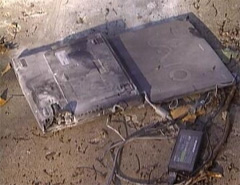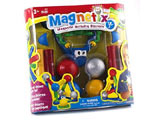Supplier risk is a huge issue. Ask Mattel. Ask Sony. Ask Dell. Ask P&G. With recalls in the thousands (usually under the radar screen of the press) most firms are not immune to the issues. It’s not just about toys or dog food.

Consider these numbers:
- Sony’s statement regarding their support of Apple's Recall of Lithium Ion Battery Packs Used in Apple Notebook Computers, "the mass manufacturer of defective batteries cost Apple and Sony about $200M dollars” plus bad reputation and significant retooling/reworking of product assumptions.
- Medtronic and Guidant recalled certain heart defibrillators.
Both companies provided new devices free and agreed to reimburse patients up to $2,500 in out-of-pocket expenses for replacement operations. About 24,000 heart patients had such procedures; some 19,000 of them with Medtronic devices and an estimated 5,000 with Guidant units. Tax payers or insurance companies usually pick up the balance since these types of surgeries are covered. Ultimately these costs come back to us all. Estimates on surgery and patient care costs, according to the Wall Street Journal, are about $120M.
- NHTSA estimates that recalls cost automakers about $100 per vehicle per recall. But according to Kevin McDonald in his book Shifting Out of Park, “that’s only part of the costs, namely, parts and labor. This estimate fails to consider costs such as engineering, tooling, and producing the replacement parts. Worse, it ignores indirect costs, which dwarf direct costs and include the loss of market capitalization, market share, and brand damage as a result of a recall. Third, there is a cost to those who do take their vehicles in to fix the recall.”
The ThinkPad battery recall, which caused Sanyo shares to slip as much as 4.2 percent, comes during an investigation of loss-making Sanyo by Japan’s securities watchdog, the Securities Exchange and Surveillance Commission (SESC). Sanyo provided the batteries to Lenovo, who manufacturers the ubiquitous ThinkPad (previously IBM).
- Lenovo shares declined 5.6 percent to HK$2.85, compared with the broader Hang Seng Index’s 0.49 percent gain. According to Lenovo, they and Sanyo jointly designed this product…but other firms were involved. And Lenovo expects to recover costs from these contract parties as well.
- Nokia's decision to recall 46m mobile phone batteries is going to cost their manufacturer, Matsushita, up to $172m, the Japanese company admitted recently.
- Matsushita (Panasonic) said it would shoulder the ¥10-20bn ($86-172m) cost of the battery replacement program.
- Fisher Price- Mattel – untold total so far. Yet, the question is, can they recover? For full list of toys on recall from them: http://www.cpsc.gov/cpscpub/prerel/prhtml07/07257.html
- Mattel’s net income dropped a mere $40M or so this quarter—this has been reported in results associated with the recall.
- Cost Plus recalled about 24,500 Bistro chairs following seven incidents in which the chairs collapsed, including one report of a minor injury. Cost Undisclosed.
- Mega Brands had one child die and several others injured. Total cost, undisclosed. But now they are adding significant more inspection efforts in their plants. This will cost several dollars per product to add to the process, they say.
- Toys "R" Us says it has stepped up testing for lead and has increased its quality-assurance budget by 25%.
- Various estimates by Manufacturers and financial institutions for inspection are from $3 to $5 increase per toy! This will be passed on to the consumer, naturally.
Quote in a recent Reuters article by Brad Dorfman and Justin Grant, “When you have a long supply chain, when you're aggressively pushing the suppliers to capture every penny of value, some unscrupulous suppliers are going to try to cut corners”, said the CEO of toy seller FAO Schwarz, Edward Schmults, in an interview. "You can still get a lot of lead paints and lead items in China. It's not well policed."
What struck us is the lack of accountability by the company. Maybe we are being too harsh, but the
“it’s not well policed” implies that the government is responsible for quality products vs. the company that makes them. It doesn’t account for poor designs, faulty transportation processes, poorly written specs and poor to no relationships with suppliers. This attitude just doesn’t fly. And it won’t solve the problem.
- Point: Testing batches of shipments means most of the money has already been spent—vs. changing the process. Any subsequent changes will cost the company and the consumer.
- Point: Spot inspections, though an improvement, does not mean traceability. It does mean catching things before the consumer ingests, but does not mean you know the source.
- Point: Spot inspections do not address issues such as spoilage or contamination during shipment.
- Point: Spot inspections do not address whether these are genuine goods vs. counterfeits.
 Question: Can you afford $5 per consumer product and possibly $100 per high-end product for this? There has to be a smarter way.
Question: Can you afford $5 per consumer product and possibly $100 per high-end product for this? There has to be a smarter way.
Lean thinking gets at the root cause of the problem. Analysis of Vulnerabilities takes a broader focus, as well as institutionalizing a real process based on good analytics of what to focus on and what is minimal (or no) risk. Having worked on these, now, you realize that people can be quite creative about ginning up a list of ‘it could happen,’ with most representing little to no risk vs. risks that really matter. Objectivity and process orientation are key. Understanding the process is key, and ultimately less expensive.
Supply Chains can be designed for more resiliency and yet less risk. Secure Supply Chains can be designed. Products can be protected with various methods. People can focus on the problem and instill it in their processes (not just inspections!!!).
Many of the changes to policies, processes and systems have multiple ROI factors, so Product Integrity won’t shoulder the cost alone.
You can contact us if you want to know more about this. AG

















